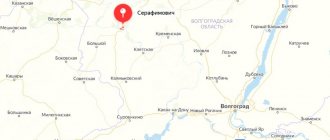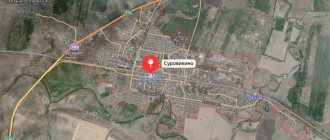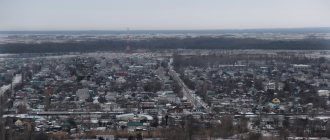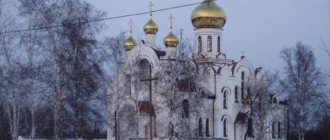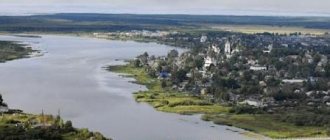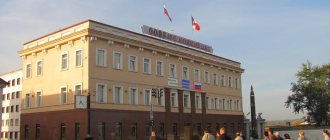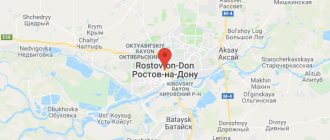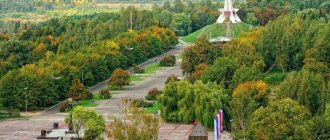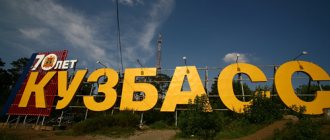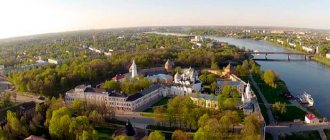The city with an area of 22.9 thousand hectares is located on the left bank of the Akhtuba River, 28.7 kilometers northeast of the center of Volgograd.
Volzhsky has a favorable geographical location - it is located at the intersection of international transport flows in the North-South and West-East directions. Water, railway and road transport routes converge here.
On the territory of the city and in its immediate vicinity, in the Volga-Akhtuba floodplain, which is called the pearl of the Volga region, there are dispensaries, recreation centers, children's health camps, tourist complexes, hunting grounds and picturesque fishing spots.
The basis of the city's economic potential is the enterprises of hydropower, metallurgy, mechanical engineering, and the chemical industry. 44 enterprises are leading. The total number of business entities in the city is more than 12 thousand, of which more than 10 thousand are small and medium-sized businesses.
The number of workers at large and medium-sized enterprises is about 60 thousand people, more than half of them are employed in industry.
The city has a diverse educational network. It has 88 municipal educational institutions of general, preschool and additional education, 5 higher educational institutions (1 of which is municipal), and three vocational education organizations. The education system of the city of Volzhsky is distinguished by its high quality, level of student achievement and professional success of teachers, which is confirmed by victories and prizes in regional and state olympiads and competitions at various levels. Since 2022, the city has fully ensured the availability of preschool education for all children aged one and a half to seven years.
Volzhsky has rich cultural traditions. Guests and residents of the city are received by 2 theaters (Volga Drama Theater and the Harlequin Puppet Theater), the Center for Culture and Art "October", the Palace of Culture "Volgoradgidrostroy", a museum and exhibition complex that unites 4 museums ("Historical and Local Lore Museum", " Exhibition Hall”, “Art Gallery”, “Museum of Memory of Soldiers of War and Law Enforcement”), 2 parks of culture and recreation (“Volzhsky” and “New City”), a municipal library network uniting 10 libraries. Various professional musical groups and creative associations work successfully, and bright concerts are given by an orchestra of Russian folk instruments, brass and symphony orchestras. The development of cultural life and art is facilitated by the activities of three music schools, two art schools, and an art school.
Conditions for the self-realization of young people, their civic, intellectual, creative and spiritual development are created by more than 50 youth and children's public associations and three municipal youth policy institutions (comprehensive youth, uniting fourteen teenage clubs, the Cascade teenage and youth complex, uniting four teenage -youth clubs, center for patriotic education of youth “Fatherland”).
More than 75 sports are being developed in the city district, there are more than 185 sports organizations, two sports schools, one of them is an Olympic reserve. Volga athletes take an active part, becoming winners and prize-winners in sports competitions at the interregional, all-Russian and international levels.
The development and popularization of physical culture and sports in the city is facilitated by the activities of the Volzhanin sports institutions, the Avangard, Rus and Voskhod sports and recreation complexes (Krasnooktyabrsky village).
The city's healthcare system is represented by 117 institutions, including 11 public and 106 private. Two public health institutions are of regional importance: the clinical perinatal center and the uronephrological center.
The number of social protection institutions is 6 units.
The leading sector of the economy is industry, which accounts for more than 94% of the production volumes of large and medium-sized enterprises. About 80% of the established industrial structure is occupied by manufacturing industries, among which two main industries dominate: metallurgy and chemical production.
The main metallurgy enterprises: Volzhsky Pipe Plant JSC (VTZ), which is the largest enterprise in the city with about 10 thousand employees, United LLC, PK DIA LLC, Volzhsky Pipe Profile LLC, ISOPAN RUS LLC, and other.
Among the leading chemical production enterprises: JSC Volzhsky Orgsintez, JSC TEKSKOR, LLC VZ, LLC Research and Production Enterprise "KF", LLC MBI Sintez. The rubber products of Voltair-Prom JSC, Volzhskrezinotekhnika JSC, Intov-Elast LLC, VRShRZ CJSC, Volgopromtrans LLC, Volzhskoye Enterprise of Rubber Products LLC and others are widely popular.
The main enterprises of mechanical engineering, equipment, including electronic and optical: JSC EPK Volzhsky, a branch of JSC EPK Samara in Volzhsky, JSC, NPP Meteor-Kurs LLC, Volgabas LLC, New Ton LLC and others.
In the construction industry, enterprises producing reinforced concrete products, abrasive tools, non-asbestos high-temperature fabrics, fiberglass reinforcement, reinforcing glass fabrics and meshes, paving slabs and other types operate effectively (JSC Volzhsky Abrasive, LLC Vati-auto, LLC GBZ- 1”, LLC “Energopromstroy”, LLC “StekloPlast” and others).
The food industry is also developed in the city. Everyone is well aware of the products of the JSC AB InBev Efes branch in Volzhsky, OJSC Volzhsky Bread Factory, JSC Molsyrkombinat-Volzhsky and others.
The main hydropower enterprise is a branch of PJSC RusHydro - Volzhskaya HPP, which is the largest hydroelectric power station in Europe and the Volga-Kama cascade with an installed capacity of 2.7 GW. and average annual electricity production of more than 11 billion kW/h. Other enterprises that support the livelihoods of the city's population and enterprises: LLC "Thermal Generation of the City of Volzhsky" (Volzhsky CHPP-1 and CHPP-2), MCP "Volzhsky Interdistrict Electric Networks", MUP "Vodokanal".
Under the influence of international sanctions and other factors, city enterprises adapt to the existing situation, find their niche and strengthen their positions in the domestic and foreign markets through modernization and technical re-equipment, participation in the processes of import substitution, development of new popular types of products and implementation of investment projects. City enterprises are also introducing technologies and implementing environmental measures aimed at protecting the environment and reducing negative impacts.
The quality of industrial products produced in the city district is annually confirmed by enterprises at various international and all-Russian exhibitions and competitions, which helps to establish new business connections, enter foreign markets, and increase exports. The largest exporting countries are the USA, Saudi Arabia, Egypt, Uzbekistan, Finland, Romania and other European countries. The city's industrialists are intensifying efforts to develop foreign trade relations with the countries of Central Asia, Africa, and South America.
In the urban district, the direction “Industrial tourism” is gaining popularity - organizing excursions to industrial enterprises in order to get acquainted with existing production facilities. Residents and guests of the city of Volzhsky have the opportunity to visit the production and get acquainted with the process and technology from personal experience, see high-tech equipment, expand information about the products produced and verify their quality.
In order to improve the environmental situation and reduce the negative impact on the environment, geochemical monitoring of the state of atmospheric air, water and soil is carried out. The work of stationary environmental control posts that continuously collect, process and store information about the state of the atmospheric air makes it possible to organize environmental protection measures and provide objective information about the state of the environment. The use of a mobile laboratory makes it possible to conduct observations at the borders of sanitary protection zones of industrial enterprises, in residential areas, at intersections, as well as near schools and kindergartens.
As part of the transition of the urban district - the city of Volzhsky to a new system of control in the field of ecology and improvement, the city territory (residential area) is divided into 12 districts. In each district, a public district council has been created and an inspector has been appointed to control the assigned territory.
History and modernity of the city of Volzhsky. Getting to know the city. Interesting facts and events.
Volzhsky is a city subordinate to the regional center - Volgograd. He is a satellite of the hero city, located on the other side of the river. Volga from him. The total area of the city is divided into 42 microdistricts and 30 blocks, which are numbered digitally and alphabetically.
In general, the numbering of houses here is unusual - it is double. The fact is that in Volzhsky it is customary to number houses not only by microdistricts, but also by streets. On one of the streets - named after. Pushkin there is a unique house with double numbering of apartments. Although, regardless of which address is indicated on the postal item, the letter will definitely arrive.
But as far as registration is concerned, everything is strict for local residents - the passport indicates the address only on the street, since this option is recognized as official. But the “mysteries” of Volga addresses do not end there - for example, houses located at street intersections can even boast triple numbers.
They receive numbering for both streets and, in addition, for the block. For Volga residents, this is a typical situation - taxi drivers or dispatchers of various services, out of habit, clarify: what is the house number on the street?
Although modernity is taking its toll, the use of addresses by neighborhood has become less and less used lately. There are 57 city streets in total. The largest of them are Lenin Avenue, Karbysheva and Mira streets. The longest, passing through almost the entire Volzhsky - st. Pushkin.
Fontannaya is considered one of the most beautiful; it was here that the first fountain in the entire city began operating, and is still in operation today. This street is adjacent to Komsomolskaya Square (aka Palace Square) and a cultural park.
All together are among the most valuable, from a historical point of view, urban places. Some streets have the same names - here two streets are called Oktyabrskaya (one in the village of Rabochy), and two more are consonant with the city - st. Volzhskaya in the villages of Krasnooktyabrsky and Rabochy.
Transport-geographical location
Located in the south of the Volgograd region, on the Caspian lowland, on the left bank of the Volga River, at the beginning of its left branch - the Akhtuba River, 20 km northeast of Volgograd.
The Caspian highway (Moscow - Astrakhan) passes through the city, and the Volzhsky - Samara highway originates here. Railway station (1964; electrified in 2003) on the Volgograd – Astrakhan line. River port (freight transportation: transit and local; structural division of the Volgograd river port). Tram (1963).
Achievements of the young industrial center
The city is quite young, it is only 67 years old, and it is one of the rare industrial cities artificially created in the USSR in the post-war period.
Volzhsky can be called the best example of an industrial center created from scratch, clearly representing the advantages of comprehensive design for the construction of settlements in an industrial territory. The distinctive features of the urban plan are simplicity, economy and connection with the main natural factor - the river.
In Volzhsky there is an unofficial division into 2 parts - new and old. Both of them are characterized by the heritage of different times. An unspoken border separates them along the street. Sverdlova. Some time ago, the settlement even had an official division into districts - Industrial and Gidrostroevsky. But in 1988 it was decided to abolish them.
Volzhsky is the second largest city in the region, and is also on the second “step of the pedestal” in terms of the number of residents, volume of output, and retail turnover. There are 581 industrial enterprises operating in the city. And there are over 3,000 organizations of various forms of ownership.
There are 39 cultural institutions, including museums, two Palaces of Culture, youth theaters, an art gallery and an exhibition hall, libraries and city parks, art schools, and professional-level musical groups.
Science and education
Volzhsky Institute of Economics, Pedagogy and Law (2000); branches of Russian universities: Polytechnic Institute (1965; branch of Volgograd State Technical University; in 2015 it included the Institute of Construction and Technology, 1954 - the oldest university in the city), Humanitarian Institute (1992; branch of Volgograd State University), branches of the Moscow Energy Institute (1995 ), International Law Institute (1999; Moscow), etc.
Central City Library (1957).
History: various versions
The city has its own interesting history, and, despite its rather young age, already has its own myths and legends.
According to one of them, it is believed that the emergence of the city of Volzhsky took place on the site of an impoverished village called Bezrodnoye. Such a settlement actually existed, but at the end of the Second World War it was almost completely destroyed.
During the Battle of Stalingrad, several hospitals and army headquarters, observation posts of artillery units were located in the surrounding area, and reserve units were also formed. Therefore, enemy aviation showed special attention to the Volga region.
But, if we go back to the origins, these desert regions have a much more ancient history. They were indeed once inhabited. And evidence of this was the objects found during the construction of the 36th quarter.
A bronze cup depicting eagles, medals dedicated to Peter I and Alexander Nevsky, a plaque with the image of the coat of arms of the Astrakhan province and the inscription “Volost Judge” were found in the pits; burials and burial mounds were also discovered.
In the Trans-Volga steppe there were traces of the presence of Asian and European peoples - the Polovtsians, Khazars and Pechenegs. Perhaps one of the most memorable periods was the time when Tatar-Mongol tribes lived here. In 1240, on the banks of the Volga, Khan Batu created the state of the Golden Horde, the capital of which was the city of Sarai-Batu. After some time, another khan, Berke, moved the capital to the banks of the river. Akhtuba and gave her the name Sarai-Berke.
The city was the richest, with a population of many thousands, many houses were built and a water supply system was created. The city stretches from the place where modern Volzhsky is located to the Tsarev farm in the Leninsky district - here the village of Saray remains as a memory of former times. In 1395, Tamerlane defeated the Golden Horde and burned its capital to the ground. The once rich region suffered terrible desolation.
These lands began to belong to the Russian state around the middle of the 16th century.
The official version of the origin of s. Bezrodnoye is as follows: it was one of the first where daring Cossacks and fugitive freedom-loving peasants settled. Folk legends say that the village arose in 1607, after an unsuccessful uprising against Vasily Shuisky took place. Residents of Tsaritsyn, trying to avoid reprisals, fled across the Volga to the banks of the Akhtuba River, founding the Upper Bezrodny town here.
These lands were visited by Stepan Razin, Dmitry Donskoy, Alexander Suvorov, Peter I, Alexander Nevsky and Leo Tolstoy. Today, a clear memory of the village. Bezrodny is the oldest building in the city - this is a school that was built in 1881. With their own funds, residents of the village, which was considered prosperous, erected a school building on the high Akhtubinsky bank, in the very center of the village.
The famous underground passages were created in the village. Bezrodny since about 1860. It is believed that they were dug by a sect of schismatic Enochites, which was quite active here, and rumors about it circulated throughout the Lower Volga.
But their very first founder was the Bezrodno cave dweller and false preacher, Andrei Lukyanov, a peasant from the Verkhneakhtubinsk village, which belongs to the Astrakhan diocese. This man, around 1860, decided to spread the fame of his supposedly pious and godly life.
Moving half a mile away from his village, he settled in the mills on the mountain, dug himself a dugout, lived and prayed in it. A little later, wanderers began to come to him, with whom he held conversations and gave instructions. He worshiped Saint Enoch, which is why the sect that was subsequently formed received its name.
Some of the believers who came to the elder even stayed with him. He tested them with patience and labor, forcing them to work in his house. Meanwhile, underground, he dug a hole, made a secret door and retired there for whole days. Soon he equipped a spacious cave, hung lamps, arranged expensive icons, and placed a reader reading the Psalter in front of them.
Anyone who sought solitude was allowed into this chapel. The rumor about these caves quickly spread throughout the neighboring villages, and people flocked to them. Caves were dug intensively, and a fairly large community was formed. Its members stopped attending the official Orthodox Church. The cave founder read many texts from the psalter, giving them his own interpretation.
Over the course of 10 years, the caves turned into huge premises, reminiscent of those in Kyiv. More and more people came here, the elder had his own associates who were his disciples. He promised all the new arrivals that on a certain day and hour of the “Great Descent” they would all be taken to heaven by Saint Enoch.
Initiation into the sect took place in the form of a ritual. Gradually, the illegal actions committed by the elder became known - he collected contributions from everyone joining the sect, robbed a pilgrim from Astrakhan who decided to visit him, before going with a lot of money to Jerusalem to venerate the Holy Sepulcher, patronized the fornication that occurred among those living in caves.
He did not hesitate to travel to nearby villages with requests for charity, and believers donated money, bread, timber, and some simply worked for the elder for free. The authorities banned him and his followers from their activities, and the most ardent supporters were exiled to Poland until 1905. The cave digger himself was assigned to the Suzdal Spaso-Efimovsky Monastery under the strict supervision of the abbot, where he subsequently died.
Afterwards, the Church of All Saints was built on the site of the caves, consecrated in September 1891. The underground passages were destroyed, they continued to self-destruct during the construction of residential buildings and, of course, posed a danger to people. In the sixties, during the construction of some blocks, it was even necessary to do intra-block redevelopment of houses.
During the excavation work, some underground passages were studied; a granite foundation and the remains of brick walls were found in them - all that remained of the destroyed church. In the pit of one of the houses, human remains were found in a wooden coffin, and a cross lay there.
Surveyors, if possible, studied the remaining parts of the passages, but then in the very young city there was no museum or local history scientists for whom all these finds could be of value. Therefore, it was decided to strengthen the underground passages and fill them with soil.
By the beginning of the 20th century, the village of Bezrodnoye was a large and fairly prosperous settlement with a 200-year history and a population of 12,000. By 1917, power was concentrated in the hands of clergy, merchants and rich peasants.
These segments of the population created a shipping partnership, they owned a monopoly on the shipping route from Prishib (now Leninsk) to Tsaritsyn, they freely engaged in the delivery and sale of goods, and were also the owners of windmills.
Coat of arms
The coat of arms of Volzhsky is presented in the form of a French shield. It is divided into two parts. At the top there is an azure field with a golden eight-pointed star. In the middle there are horizontal wavy belts of variable colors. Below there is a green tree on a yellow background.
The coat of arms was adopted by Resolution of the Volga City Duma No. 85/23 dated March 26, 2003 (as amended by Regulation No. 74-VGD dated November 1, 2006). The artistic composition is included in the State Heraldic Register of the Russian Federation under No. 110.
Construction of an unusual city
The name “Volzhsky” first appeared as the name given to the village of Hydroelectric Power Plant Builders, registered in 1952. Its origin is very simple - since the construction of the hydroelectric power station was carried out on the Volga, and workers lived on it, the village logically began to be called Volzhsky .
In 1954, the village received city status. At this point, other options for the name were considered, for example, Stalinsk-on-Volga, but in the end it was decided to keep the name the same.
In those days, the pace of construction was simply enormous, and re-registration of documents with all the ensuing consequences would have taken a lot of time. Therefore, they refused to change the name.
The first to be put into operation were 8 houses, which made up the first street of the city of Volzhsky. In addition to residential buildings, it was decided to establish cultural institutions. A prerequisite for this was also the arrival of a powerful film installation at the construction site. To adequately accommodate it, one of the houses was converted into a cinema, which was called “Znamya”.
Volzhsky bears the proud status of one of the greenest cities in Russia. Greening the city was discussed even during the discussion of the general plan in 1950.
Parks, alleys and many flower beds were planned. The very next year the first park was laid out in the city. It is noteworthy that the trees planted in it were transferred here from the bottom of the future reservoir.
The park was inaugurated in the summer of 1953. A year before that, the first department store began operating in the village. In 1954, hospital buildings and the first maternity hospital were erected. In 1955, a second cinema, Energetik, appeared, and the Palace of Culture and stadium opened.
Initially, the city of Volzhsky was located only on the river. Akhtuba, which is a branch of the Volga. But later the boundaries of the settlement were expanded to include several large villages: Krasnooktyabrsky, Paromny, Uralsky, LPK, Pogromny and Teschina. Thus, the territory of the coast of the Volgograd Reservoir also began to be classified as a populated area. Therefore, now Volzhsky is located on two rivers at the same time. And today it occupies an area of 15.5 thousand hectares.
In 1958, a major event occurred - the Volga stopped, after which the bulk of the water was directed into a new channel. This was a unique event, of which there were no examples in the world practice of hydraulic engineering. In September 1961, the hydroelectric power station was put into operation.
In 1975, after the joint flight of the Soyuz and Apollo spacecraft was completed, the cosmonauts of the USSR and the USA visited the city of Volzhsky. As a souvenir, the cosmonauts presented the city with a photograph taken from orbit.
It has a gray steppe with a dark thread of a river, a light strip of a hydroelectric station, near which there is a bright city surrounded by industrial enterprises, with a web of roads and endless gardens. From above, Volzhsky looks very much like a large, friendly open hand.
Today, various areas of industry are developed in Volzhsky, and it itself is surrounded by greenery. And I can’t even believe that a little more than half a century ago there was deserted steppe and feather grass here.
Popular message topics
- The harm of alcohol on the human body
Today, any healthcare specialist can tell you what negative effects alcohol consumption can have on the body. This problem is very relevant, because not only adults are susceptible to this addiction, - Planet Mars
Mars, or as it is called, the Red Planet, was named after the ancient Greek god of war Ares, or, in Roman mythology, Mars. This name was associated with the blood-red color of the planet, which has long been associated with war. - Nabokov's works
Vladimir Vladimirovich Nabokov is a great writer, poet and translator who came from a Russian family. But, as the author said about himself, he is an American writer.


